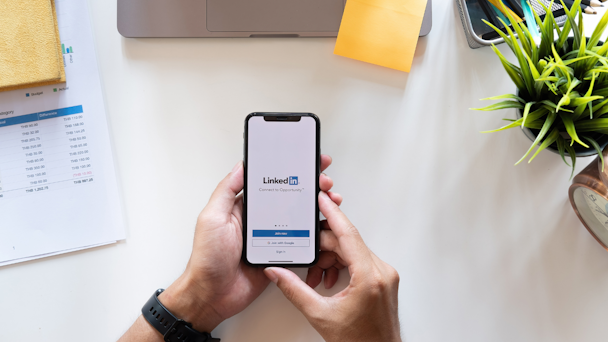LinkedIn debuts new B2B marketing tools to incentivize ad spend in face of recession
New LinkedIn B2B features aim to give marketers a leg-up on measurement, brand suitability and engagement as a recession rears its ugly head.

LinkedIn is gunning for B2B ad dollars as economic uncertainty grows / Adobe Stock
LinkedIn today announced the rollout of a suite of new product offerings designed to help businesses get more out of their business-to-business (B2B) marketing efforts on the platform.
It’s part of the company’s larger strategy of engaging B2B brands – and driving continued advertising spend – in the midst of increasing economic uncertainty.
Announced at the company’s inaugural B2B marketing summit B2Believe, the new offerings include new measurement capabilities and a handful of fresh ad formats that aim to help improve campaign measurement. They include the following:
Advertisement
1. Revenue Attribution Report: This new measurement platform provides a more granular look into how their campaigns impact revenue. It seeks to help marketers understand the tangible business impacts of their initiatives in plain language.
The development will be an especially welcome one for marketers who need to communicate returns on investment in easy-to-understand language to their counterparts in the C-suite and other business stakeholders.
“The first and foremost rule for every CMO is to speak the language of business relevance,” says Margaret Franco, chief marketing officer at B2B financial software firm Finastra. “It’s important to benchmark using metrics like share of voice and reach, but CMOs need to clearly articulate the impact in financial outcomes – for example, if you spend one dollar in marketing, you get three dollars back in revenue – to be heard, as well as valued. In marketing, it’s all about talking to your stakeholders in their language, and that applies to your executive team as well as customers.”
2. Brand Safety Hub: This new platform, created in collaboration with media measurement and verification firm DoubleVerify, aims to provide B2B marketers with valuable insights into where they can and are serving ads to keep a pulse on brand suitability and safety. The Brand Safety Hub includes a list of third-party publishers that can help scale B2B campaigns. Within the hub, users can also prioritize specific types of content that align with their brand and employ a range of custom controls to find out where their impressions are being delivered across the LinkedIn Audience Network.
Advertisement
3. New ad formats: LinkedIn is rolling out a smattering of new media formats, including:
-
Click to Message Ads: With new Click to Message Ads, a prospect can simply click on the ad they see to begin a conversation with the brand. For the brand, this kind of ad puts the customer first and enables marketers to personalize their engagement strategies.
-
Conversation Starter Ads: These ads prioritize paid messages to users so as to only surface the messages that are most relevant to them. This aims to help ensure that B2B brands are not wasting ad spend and are connecting with the right leads.
-
Promoted employee posts: LinkedIn said today that it will soon give business marketers permissions to promote individual employee posts from their company page. The tool seeks to help B2B brands drive more engagement and, according to the tech company, help to “humanize” brands.
4. Search updates: In an effort to make brands’ LinkedIn articles and newsletters more searchable across the web, LinkedIn will roll out search engine optimization (SEO) titles, descriptions and tags to these types of content. The company says it is also working to improve the platform’s product search functionality, which could help B2B brands connect with potential buyers.
LinkedIn says there is a real appetite for new B2B marketing capabilities like these, given a recent study. Today the company unveiled the findings of a survey of nearly 2,000 marketing executives from around the world. Among the key findings is that more than two-thirds (67%) of B2B marketers plan to maintain or increase spend on brand-building efforts over the next six months.
Suggested newsletters for you
Marketing is an especially pressing focus for B2B businesses amid growing economic uncertainty, the study also suggests. Some 78% of B2B marketing leaders believe that companies that maintain or dial up their marketing spend during periods of uncertainty recover more quickly.
They’re anxious about the economic forecast nonetheless: more than three-quarters (77%) of chief marketers said they’re feeling pressure to prove more short-term returns on investment, and 30% indicated they are concerned that uncertainty will force them to operate more reactively.
“Right now, marketers face an uphill climb,” says Abhishek Shrivastava, vice-president of product at LinkedIn. “They have to continue to engage with buyers who are not necessarily in-market to make a purchase right now, while also demonstrating to their C-suite the revenue impact their marketing campaigns drive.”
LinkedIn is eyeing the opportunity and hoping to position itself as an attractive partner for B2B brands during this period of upheaval. It may be a tall order: according to the platform’s own research, just one in four chief marketing officers and chief financial officers will rely on third parties – including marketing and technology partners – to support their efforts over the coming six months.
“There’s a lot of uncertainty right now, but we’re focused on helping marketers meet the moment with confidence by announcing new tools ... that will allow them to continue to authentically reach their audiences and measure and map their work to business impact.”
For more, sign up for The Drum’s daily US newsletter here.

